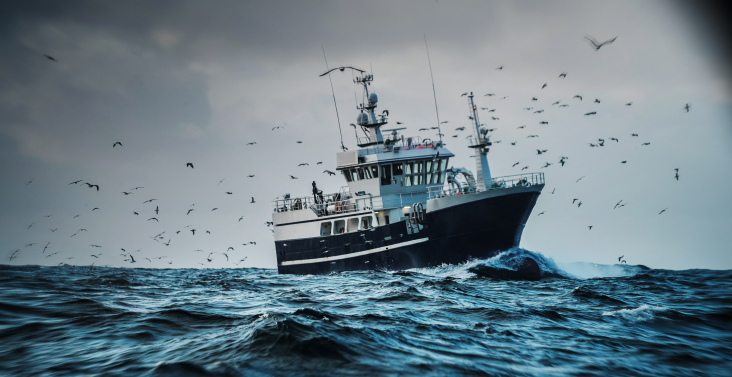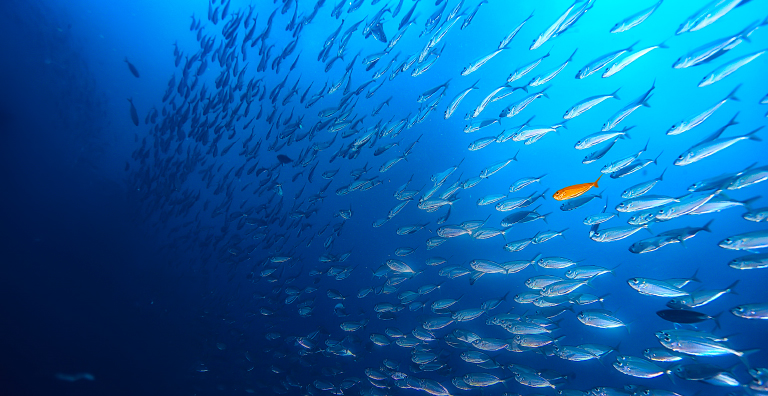World Fish Migration Day — How UHF RFID Helps Scale Up Fish Counts to Tackle Seafood Sustainability
May 21st marks World Fish Migration Day, when conservationists highlight the need to keep the world’s rivers healthy to help migratory fish populations to recover.
In addition to dams blocking access to breeding grounds and the pollution of rivers and oceans, fish face a number of challenges which threaten their survival and sustainability as a global food source.
The Risk of Running Out
According to the UN’s Food and Agriculture Organization, in 2015 one third of fish stocks were being fished at biologically unsustainable levels, more than triple the rate of stocks being unsustainably fished in 1974.
In 2019, Oceana cited a report from the European Commission’s Scientific Technical and Economic Committee for Fisheries warning that Eastern Baltic cod risked commercial extinction in European waters and that other vital European fish stocks faced imminent danger of collapse, including Iberian sardine and Mediterranean hake.
Gaining Accurate Data with RFID Tags
Governments rely on accurate data to help inform policies that lead to sustainable use of natural resources and adequate investment in fish population recovery.
Within the aquaculture industry, fish stocks are currently monitored by tagging fish with tiny passive low frequency (LF) RFID tags. LF transmits underwater reasonably well and is a very effective technology for tracking fish in harsh environments such as very cold, turbulent or briny water. However, LF tags are prone to radio interference from metal objects, mains-fed machinery and spinning motors, which emit a low frequency of their own that can reduce the accuracy of data recorded by RFID readers.
In addition to the risk of radio interference, LF-tagged fish have a short RFID read distance and the protocol allows only one tag to be read at a time. If ten fish swim past the reader at once and only one tag is read, the stock count is inaccurate.
Scaling Up Fish Counts
In 2021, HID, as part of a three-way consortium, was awarded a Eurostars/Innovate UK funded project to develop a UHF tag and reader system that could be used to count multiple fish simultaneously, with a longer read range between the shoal and RFID reader.
The consortium is comprised of HID, as the leading UHF RFID tag solution specialist, RFID Solutions AS, as the leading Norwegian RFID reader and antenna solution specialist (with over 50% market share in tag sales in Norway), and Norway’s Institute of Marine Research (IMR), as the fishing industry specialist in Norway.
The project involves the development of an innovative RFID UHF tag and fish monitoring system that can be used underwater within large fish cages, using the globally accepted EPC C1G2 UHF standard, which offers fast read speeds and an anti-collision algorithm that enables large numbers of tags to be read at once. This is important for tracking thousands of fish that are darting back and forth in front of the reader.
The tags also need to be encased within a material other than glass to ensure food safety.
Working Together to Improve Fish Tracking
Our UHF tag development is part of the consortium helping Norway’s Institute of Marine Research (IMR) boost the efficiency of fish stock data capture by improving the accuracy of fish migration tracking. IMR has been monitoring marine fish stocks since the 1940s and is a leading organization on the use of tag-recapture methods.
Innovation Based on Experience

Our technology partner, Auxcis, provides RFID tagging solutions to Vlaamse Visveiling, the company that conducts fish auctions in the Zeebrugge and Oostende fishing ports. Over the past decade, Omni-ID has supplied Auxcis with thousands of EXO 800P Rigid tags. These rugged, low profile medium range tags operate at temperatures from -20°C to +85°C (-4°F to +185°F) and are optimized for attachment to plastic assets, such as the crates used to store and transport fish. Incorporating the Alien Higgs 3 chip or the more recent Impinj M730 chip — both global frequency tags — ensures that fish stocks purchased at auction can be tracked worldwide.
Using our extensive experience designing tags for fishing and aquaculture industries, we set about developing a tag that could be injected subcutaneously, using existing LF implanter equipment, with the tag size ranging from 15mm to 28mm in length and 3mm in diameter.
The client stipulated that the tag had to have rounded edges to avoid injuring the fish when it was applied. The tiny tag also has to be colored blue so that it is clearly identifiable when caught fish are processed for consumption.
Scaling Up Using UHF RFID
It is estimated that using UHF, the number of fish that will be registered by each antenna will be around 100 times the number registered with the LF tags and antennae currently used by the aquaculture industry.
Our early tests with UHF tags have shown that we can achieve read ranges of between 10 to 20 times that of the LF tags when out of water, and we’re excited about the broader applications of this new technology.
Science Supporting Sustainability
You can’t manage what you can’t measure. By safely tagging and releasing young migratory fish into rivers, it is the hope that when mature fish are later caught in the ocean, their UHF tags will reveal a little more about their migration paths and the health of their environment. More detailed data will help researchers more accurately ascertain current stock levels and future yields, so that governments can do what is required to support sustainable fishing — and allow populations to recover and thrive.
Take a deeper dive into RFID tags for Animal ID, including aquaculture applications >>
David Owen is an integrated Marketing Manager and brand builder with both professional agency and client-side experience. His client-side experience has included the Commercial Property sector with Vail Williams LLP and before that was in the conference, meeting, events and golf industry. In 2019, David joined Omni-ID (now an HID Global company). David and his family reside in the quiet countryside of Surrey England, where he likes to enjoy a round of golf.
